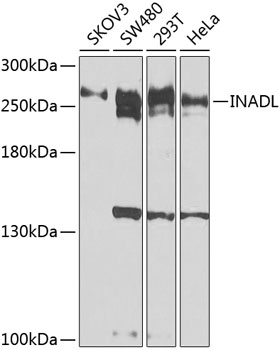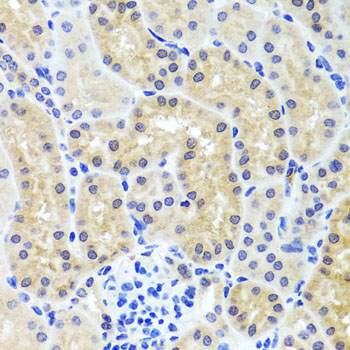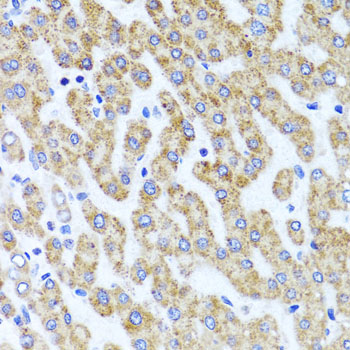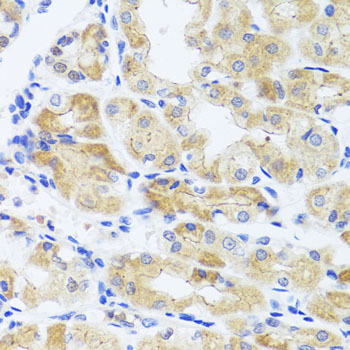-
Product Name
INADL Polyclonal Antibody
- Documents
-
Description
Polyclonal antibody to INADL
-
Tested applications
WB, IHC
-
Species reactivity
Human, Mouse
-
Alternative names
PATJ antibody; Cipp antibody; INADL antibody; InaD-like antibody; hINADL antibody; inaD-like protein antibody
-
Isotype
Rabbit IgG
-
Preparation
Antigen: Recombinant fusion protein containing a sequence corresponding to amino acids 450-680 of human INADL (NP_795352.2).
-
Clonality
Polyclonal
-
Formulation
PBS with 0.02% sodium azide, 50% glycerol, pH7.3.
-
Storage instructions
Store at -20℃. Avoid freeze / thaw cycles.
-
Applications
WB 1:500 - 1:2000
IHC 1:50 - 1:100 -
Validations

Western blot - INADL Polyclonal Antibody
Western blot analysis of extracts of various cell lines, using INADL antibody at 1:1000 dilution.Secondary antibody: HRP Goat Anti-Rabbit IgG (H+L) at 1:10000 dilution.Lysates/proteins: 25ug per lane.Blocking buffer: 3% nonfat dry milk in TBST.Detection: ECL Basic Kit .Exposure time: 10s.

Immunohistochemistry - INADL Polyclonal Antibody
Immunohistochemistry of paraffin-embedded mouse kidney using INADL antibody at dilution of 1:100 (40x lens).

Immunohistochemistry - INADL Polyclonal Antibody
Immunohistochemistry of paraffin-embedded human liver injury using INADL antibody at dilution of 1:100 (40x lens).

Immunohistochemistry - INADL Polyclonal Antibody
Immunohistochemistry of paraffin-embedded human stomach using INADL antibody at dilution of 1:100 (40x lens).
-
Background
Scaffolding protein that may bring different proteins into adjacent positions at the cell membrane. May regulate protein targeting, cell polarity and integrity of tight junctions. May regulate the surface expression and/or function of ASIC3 in sensory neurons. May recruit ARHGEF18 to apical cell-cell boundaries.
Related Products / Services
Please note: All products are "FOR RESEARCH USE ONLY AND ARE NOT INTENDED FOR DIAGNOSTIC OR THERAPEUTIC USE"
